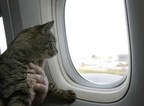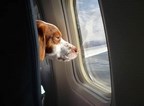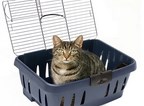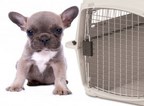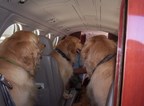Pets are dear to their owners and it is natural that there will be apprehensions and expectations of safe transport while traveling on an airplane but it is also assured that other than some accidental lapses the pets are transported with care and dignity. Even then there are regulations and it is better if the owner follows the tips for traveling with your pet on an airplane to the point so that any unwanted complications can be avoided. The first is the acceptance of working to the existing conditions of transportation. It should be remembered that the pet and the owner are not the only passengers traveling on the airplane, there are others and the airline is obliged to provide quality service to each and every passenger to their possible capabilities. So there may not be situation of allowing the pet with the passenger but in most cases they are considered accompanied baggage of the passenger and there are specific conditions and requirements that the airline follows to transport pets. Some of the airlines have devised programs for pet transportation in situations where they are unable to allow the pet in the passenger cabin and the program is different from cargo transportation. SO that even though a pet is considered accompanied baggage they are treated differently from the regular baggage. It should be remembered that unwanted panic disturbs both the co passengers and the airline staff.Better to avoid such extra surge of emotions.
The earliest tip is to ensure that it has completed maturity; a half grown dog or cat may not be physically tuned to take the rigors of airplane travel and can fall sick, their experiences will also not be enough to take on change of location and weather. Falling dick is a complicated situation if the pet is traveling in cargo enclosure. Remember that an airplane has little less oxygen that at your standing point on ground and if fallen sick this can affect health drastically.
It is better if the flight is long distance so that stopovers are avoided as at every stop the animal will be anxious to meet the owner and can panic. A moderately occupied flight will absorb the temperature variations quickly and so the pet is not subjected to extreme weather conditions of the airplane. For that only it is advised to avoid the full booked weekend or festival flights. They also can damage the constitution of the animal. Again the weather should be moderate, extreme summer or winter is better to avoid. Even the airplane air-conditioning will not be sufficient in cases of any change or foulness of weather.
It is better to consult the vet before the journey so that conditions are verified and advice taken. It is always better for the cat or dog to remain in best of health before traveling. Among our tips for traveling with your pet on an airplane it is strictly suggested to avoid any type of tranquilizer before boarding the plane. The high altitude and low oxygen condition can have serious adverse effects on the animal so that even loss of life is not ruled out. Never attempt such heroics.
For international travel it is mandatory to get a 15 digit microchip for pets which is unencrypted and should be present in all the medical information and documents of the animal so that at any point of time any agency can verify this. There are ISO standard chips which should be used. Some smaller size animal is allowed to be transported in the passenger cabin but for most of the dogs the cargo enclosure is used. For keeping them in the enclosure there are internationally standard cages which should be used; they are more specifically crates and with provisions of highlighting and wring information on them. The crates and other necessary materials are found in most of the good pet shops but even then the owner should know what to get.
The mandatory information to put in the crate should contain the name of the owner, flight number, airlines name, destination, the animal and the name by which it is called. Some instructions in emergency can also be separately kept with the case; the UP side is clearly marked with fluorescent paint and PETS is also visibly marked. Soft materials on inside of the crate are also necessary. Animals are better to be kept individually in a crate than together. For puppies however two in a regular crate can be kept. The crate dimensions are specified in IATA manuals and owners are advised to follow that, failing which the pet may not be allowed to be loaded. It is better if marks are there to easily identify the crate.
A feeding chart and plate for meal should also be given with the crate and there is acceptance and other formalities to be submitted to the airlines along with the last time fed schedule. It is necessary to feed with three hours of departure but not full stomach. If the animal has specific liking then particular brand of food packet should also be attached securely with the crate. The airlines should be informed about transportation of pet and necessary procedures to be followed. Every airline has own protocol and manners to take the transportation. It is better to allow them time to prepare.
Before booking the reservation or ticket for an international journey it is important that prior information is obtained about entry of animals in the country through air. Apart from Europe at almost all other places there are one or other restrictions on pet travel. It is better to verify that and even while booking if the destination is known the airlines staff will themselves inform about the norms in that particular region. Pets booking can’t be done online, it should be done personally. Once all the tips for traveling with your pet on an airplane are complied with it can be really an exciting experience.
